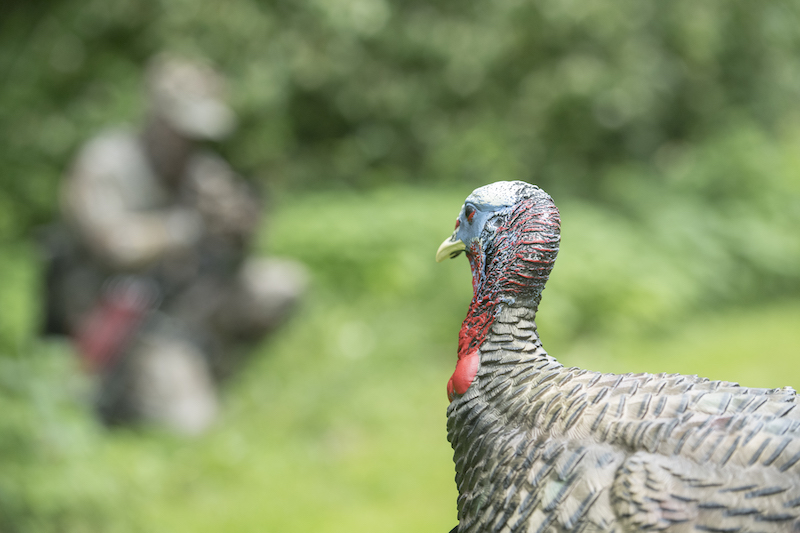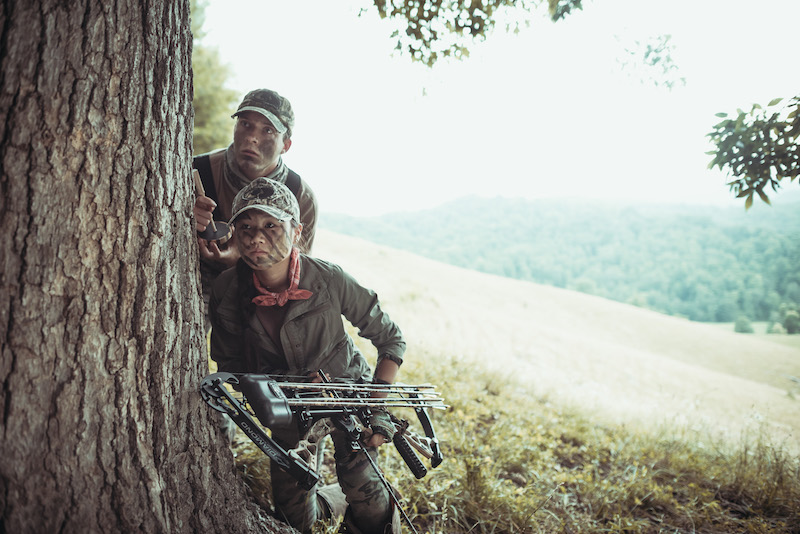Choosing a turkey decoy from a store’s many options can spark hot internal debates as you narrow your options and consider how you’ll deploy it. Your options seem endless when trying to entice toms into range, but learning turkey behavior and how different decoys trigger responses can help you succeed consistently.
Spring hunts coincide with breeding season, which means toms can fall for any tactic involving hens. When aggressive toms spot another gobbler intruding on a hen, they try to run the suitor from the area. Hunters can replicate those scenarios with a tom (or jake) and hen combination.
In fields or large woodland openings, position a hen decoy with its belly on the ground, and place a tom or jake decoy standing over it. A strutting tom decoy also works great for imitating breeding situations. Aggressive gobblers want a closer look, while a jake decoy can trigger toms to rush in to establish dominance. This pose can even inspire subordinate toms to come charging in from a distance.

Choose a decoy with a mostly blue or white head to replicate a non-aggressive turkey. Photo Credit: ATA
Gobblers can’t stand a jake’s presence, especially when they interfere with breeding. A jake and hen duo often works, especially when the jake’s body language suggests submission. Not all toms are aggressive, but even docile gobblers can get fired up by a jake sneaking off with a hen. Position the decoys so they face your setup. That will encourage a curious tom to walk between your position and the decoys to cut them off, putting the tom within bow range.
Turkeys’ heads change colors with their moods. White and blue hues suggest a relaxed bird, while a bright red head usually signifies a gobbler on edge. To replicate the jake and hen situation, find a jake decoy with a neutral blue or white head to imply the jake is content with the hen. A red head might look aggressive, which risks turning a wary tom away if jake gangs have harassed it all spring.
Lonely hens are welcomed sights for toms, especially subordinates too timid to visit decoy spreads that include another male. Rather than using an upright hen decoy, which suggests alertness, use a feeding decoy. It looks relaxed and enticing, especially in heavily hunted areas.
A full-strut tom decoy is the most aggressive option. It implies the tom is claiming another’s turf and it’s ready to fight. If you’ve scouted your area and seen toms running each other off a field, a strutting decoy is a great option. Aggressive gobblers might run in to fight, while timid gobblers slink away in fright.

Sometimes using no decoy at all is the best option for the area. Photo credit: ATA
Sometimes, of course, it makes sense not to use decoys, especially in late May when foliage is thick. Because visibility is limited, decoys might not be worth their weight if you’re hunting in thick timber. Late-season turkeys have also been pressured much of the season, and know most tricks hunters try. Forgoing decoys eliminates visual cues gobblers might remember from narrow escapes from previously encountered hunters.
Turkey hunting gives hunters unique opportunities to communicate audibly and visually with their quarry. Try different setups throughout the season, and keep tweaking your presentations. Subtle tricks can help bag your bird.